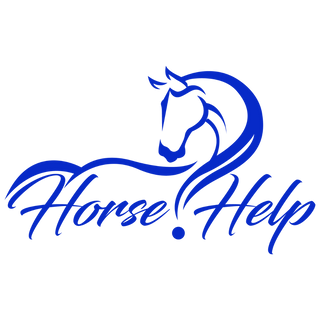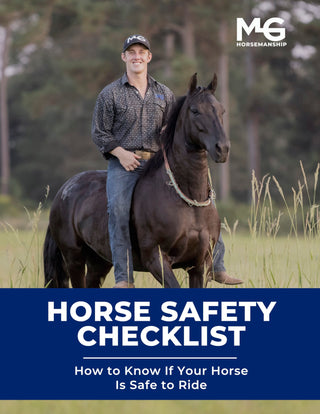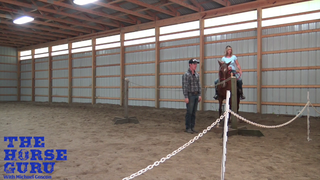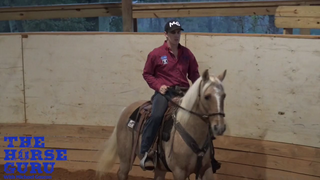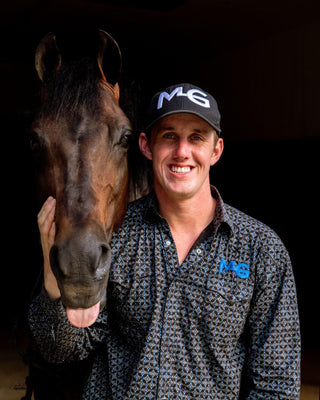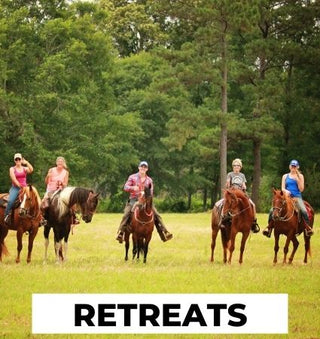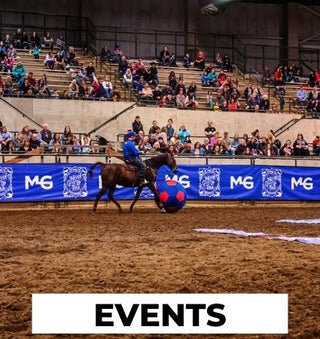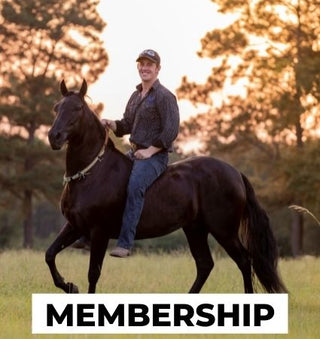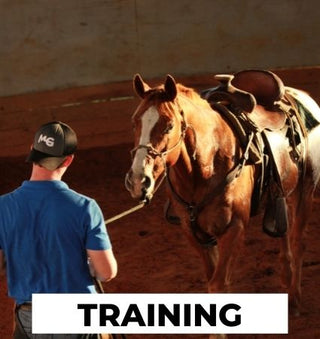Watch the Video Here or continue reading below!
If the idea of cantering makes your heart race—in the bad way—you’re not alone. Many riders feel perfectly fine at the walk and trot but freeze up when it comes to the canter. I'm Michael Gascon, the Horse Guru, and trust me—I’ve been in your boots.
Despite growing up riding fire-breathing Paso Finos, their smooth gaits meant I never truly developed my canter seat. The result? Floppy elbows, bouncing seat, and zero confidence. It wasn’t until I started working with warmbloods, Quarter Horses, and Mustangs that I finally cracked the code. And today, I’m going to share that code with you.
Step 1: Fix Your Seat—Sit on Your Pockets, Not Your Tailbone
Why Your Position Matters at the Canter
Most riders naturally perch toward the back of the saddle, thinking they’re sitting straight when they’re actually leaning forward. This “teeter-totter” position throws off your balance and cues tension throughout your body.
Fix it like this:
-
Slide to the front of your saddle.
-
Roll your hips back until you’re sitting on your pockets.
-
Let your legs come forward and your shoulders fall slightly behind your hips.
This position centers your weight and helps you relax into the horse’s movement, creating a strong base of support at the canter.
Step 2: Ride Relaxed and Connected
The Secret to Staying With Your Horse
Think of your horse's movement like a wave—you want to ride with it, not brace against it. Stiffness creates separation between you and your horse, which leads to bouncing, discomfort, and anxiety.
When you're sitting deep and relaxed:
-
Your hips follow the motion naturally.
-
Your mind is clear and focused.
-
Your horse feels your softness and relaxes too.
This builds a positive feedback loop that makes both you and your horse more confident.
Step 3: Set Your Horse Up for Success
Balance Starts with the Horse’s Frame
A horse with its head high and back hollow feels like riding a jackhammer. Before any transition—especially before cantering—make sure your horse’s head is low and his back is rounded.
Here’s how:
-
Ask for softness at the standstill.
-
Only walk, trot, or canter when the horse yields and drops its head.
-
Maintain that softness through every gait change.
When your horse is collected and carrying himself properly, you’ll instantly feel a smoother, more comfortable ride.
Step 4: Use a Controlled Environment
A Small Space Is Your Best Friend
One of the best ways to build canter confidence is by practicing in a small, enclosed area. A round pen, arena, or fenced pasture gives you:
-
Less need to steer.
-
More focus on your seat.
-
A mental safety net.
This gives your brain fewer things to worry about so you can just focus on breathing and feeling the rhythm.
Step 5: Build Balance on a Loose Rein
Don’t Use the Reins to Balance
Many riders unknowingly balance on their horse’s face—especially at the canter. But this bad habit prevents real confidence from forming.
Instead:
-
Keep a soft, loopy rein.
-
Ask for collection with leg and seat, not by pulling.
-
Let the horse carry himself.
Cantering on a loose rein forces you to use your seat and core, helping you build genuine balance and control.
Pro Tips for Confident Cantering
Top Advice from the Horse Guru
-
Don’t lean forward – It throws off your balance and stiffens your body.
-
Don’t choke up on the reins – You’ll cause tension and risk a crow-hop.
-
Don’t “chase” your horse – This isn’t a cowboy movie. Let the horse do the work.
-
Sit deep and breathe – Push past the initial discomfort to allow your body to soften.
-
Ride for time, not laps – Aim for at least 5–10 minutes of cantering to truly relax into it.
How Often Should You Practice?
Daily Reps Build Confidence
If you committed just 10 minutes a day to cantering:
-
You’d build more balance.
-
Your fear would slowly fade.
-
Your horse would also become more consistent.
It’s not about being perfect—it’s about being consistent.
Final Thoughts: You’ve Got This
Confidence in the canter isn’t built overnight, but with the right techniques, mindset, and horse setup, it’s completely within reach. Start small. Sit deep. Breathe. And give yourself the space to grow.
The goal? Cantering freely on a loose rein, with trust in your seat and no tension in your reins.
Want more tips on training problem horses? Join our Free Horse Help Challenge and start enjoying your horse today!
